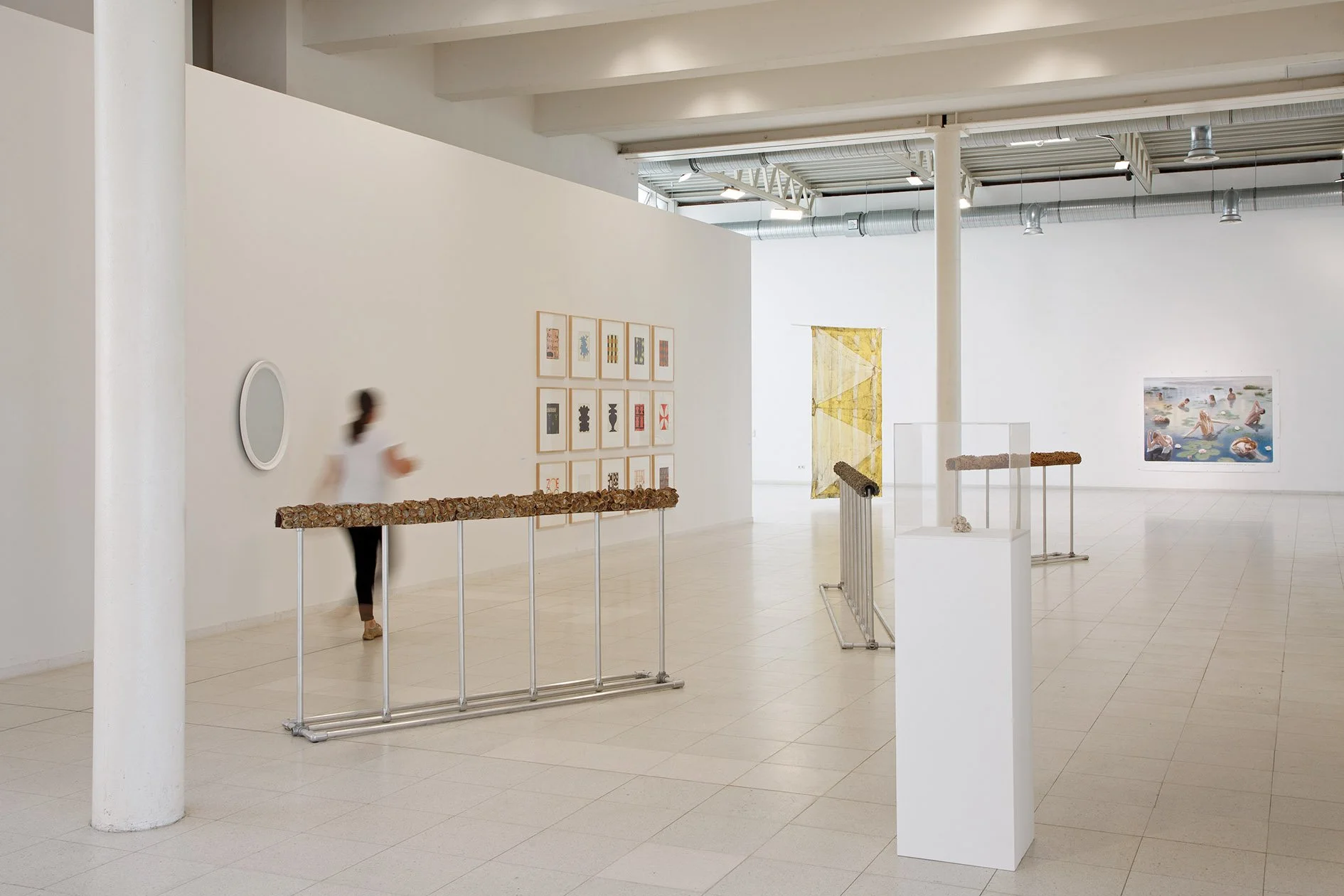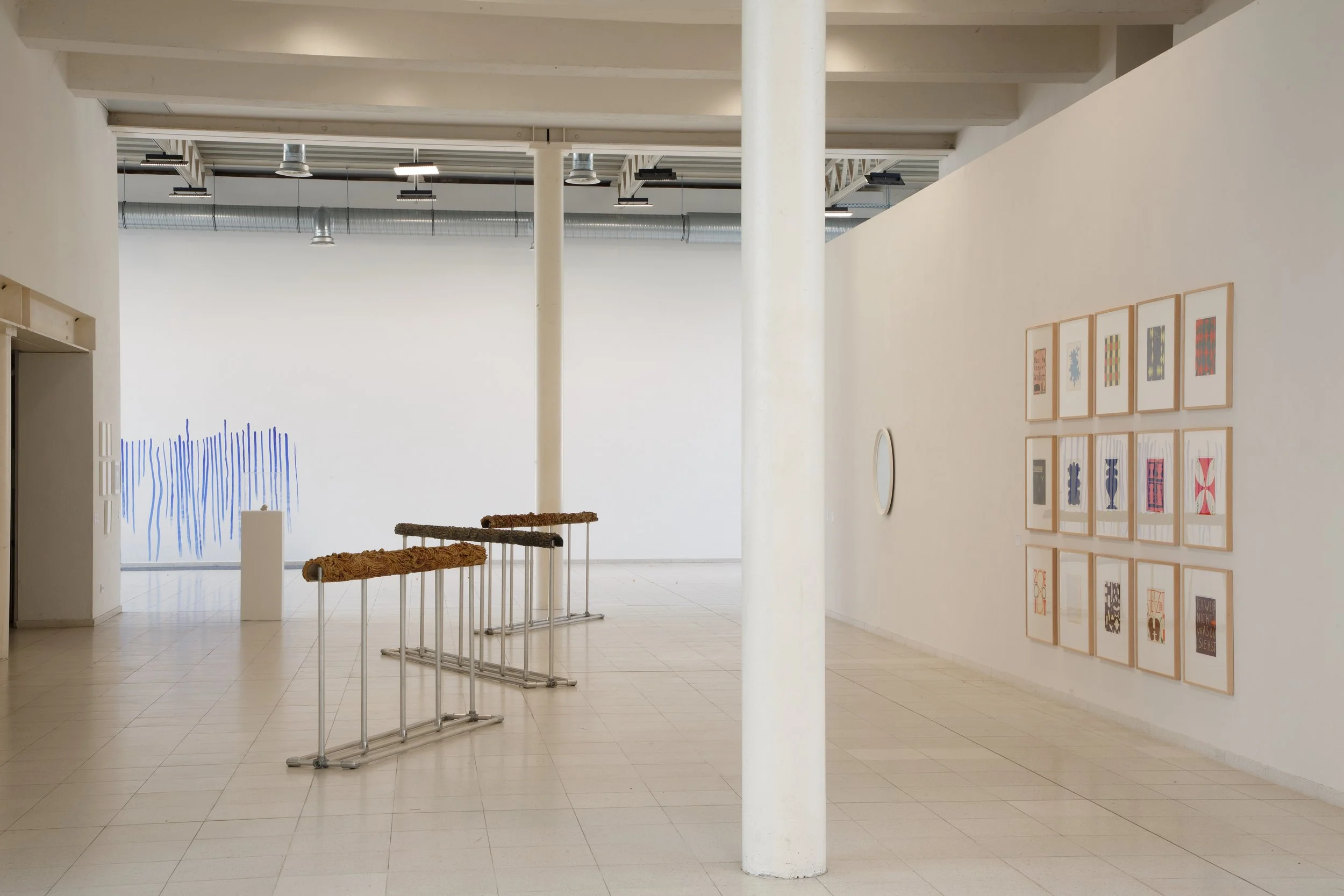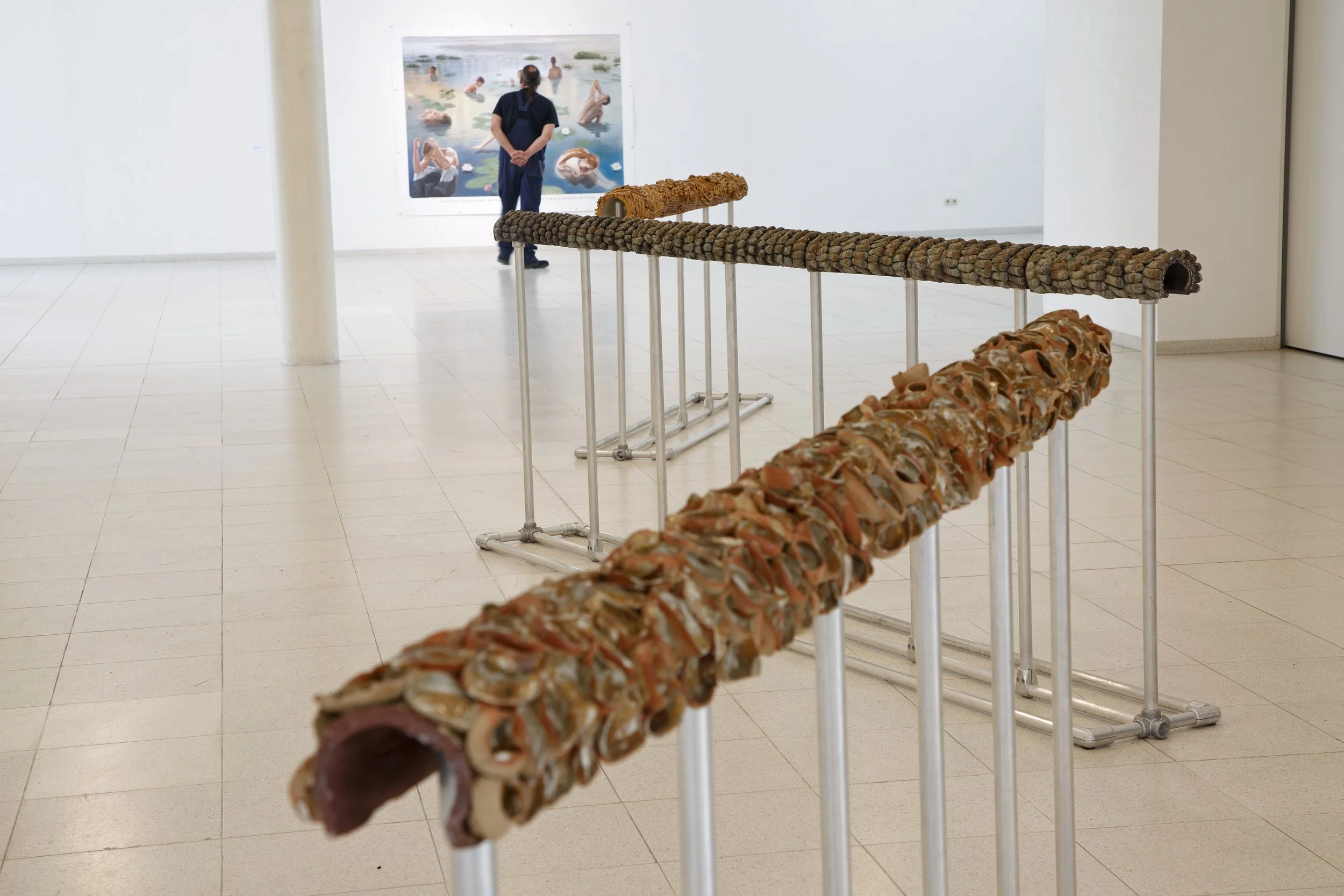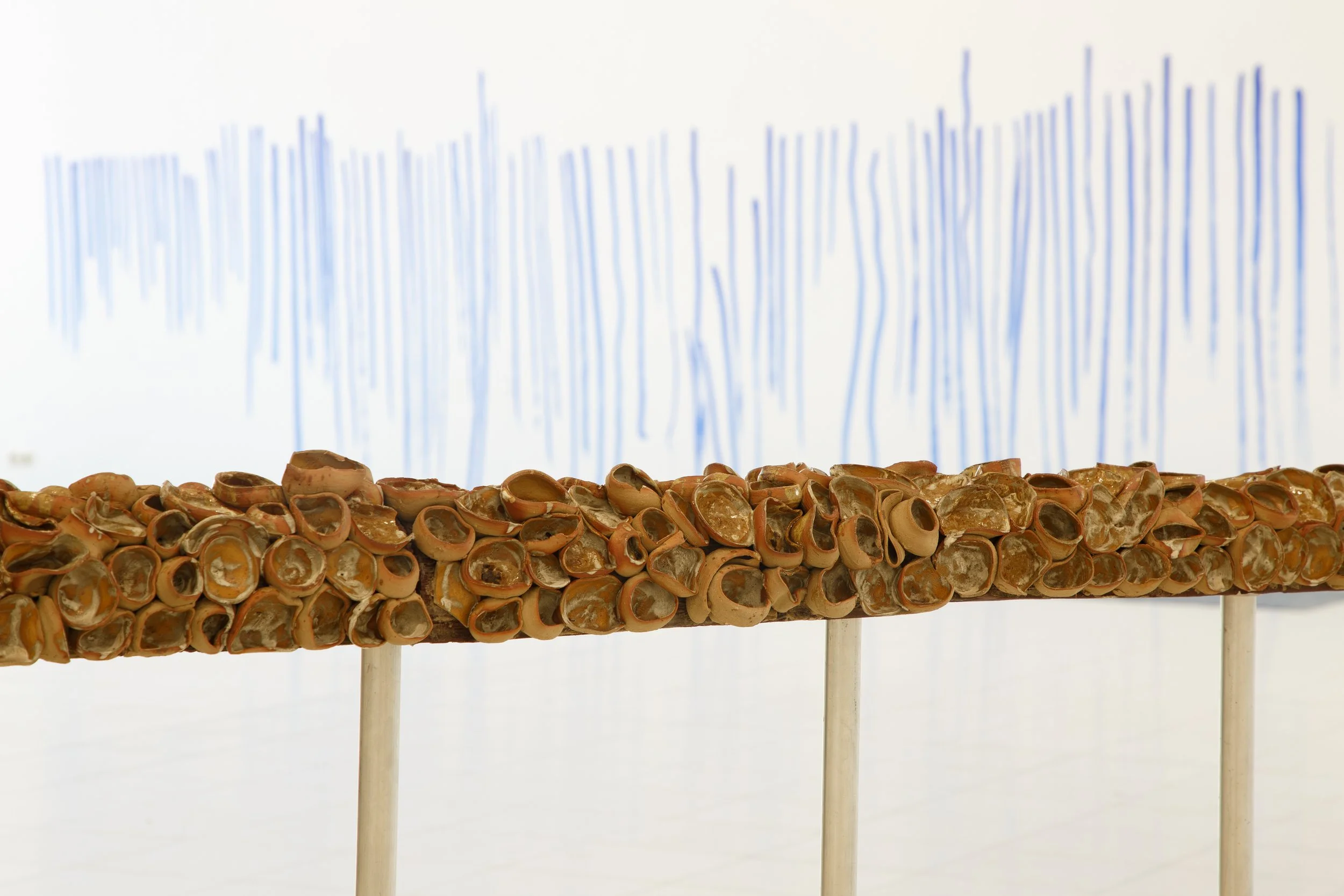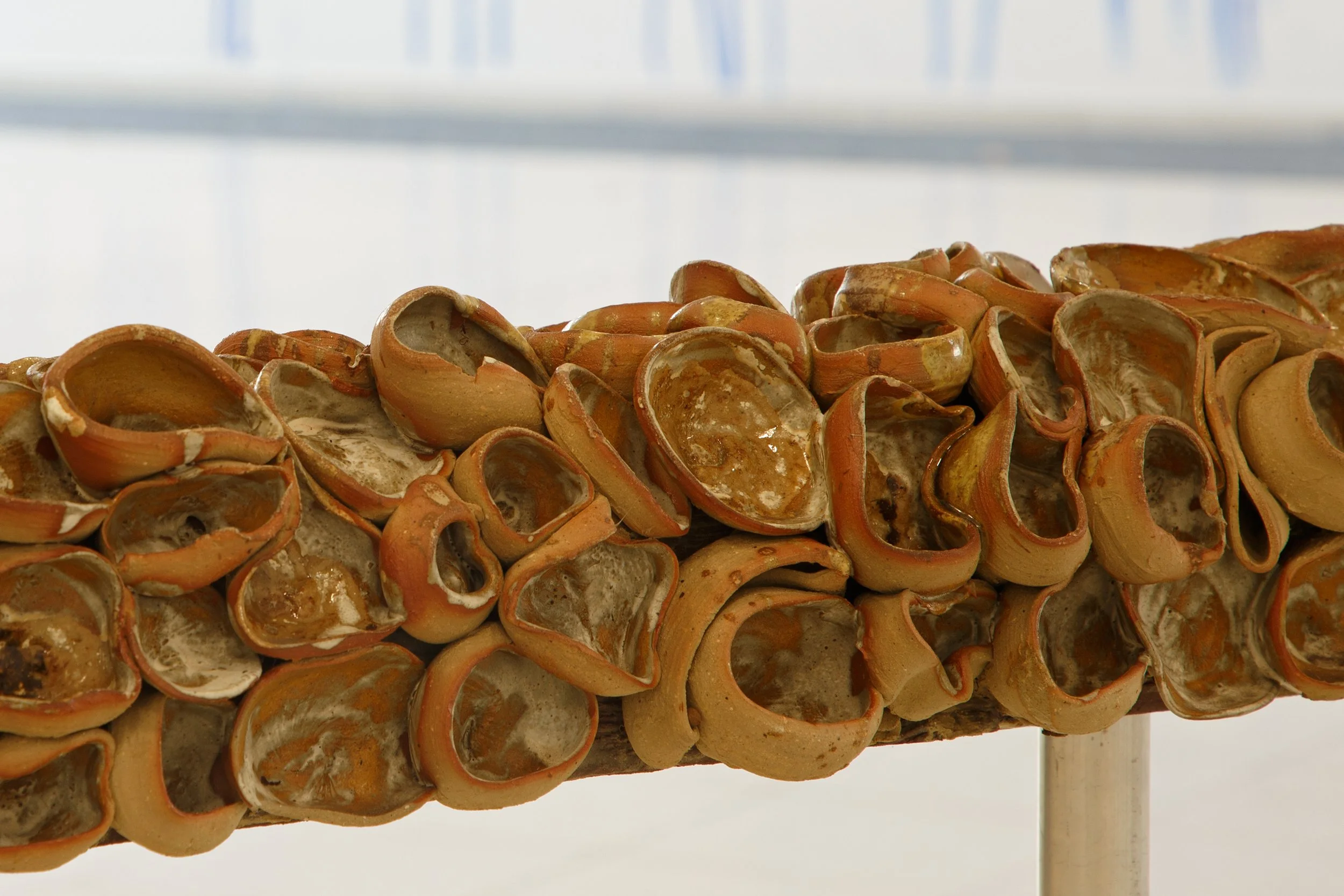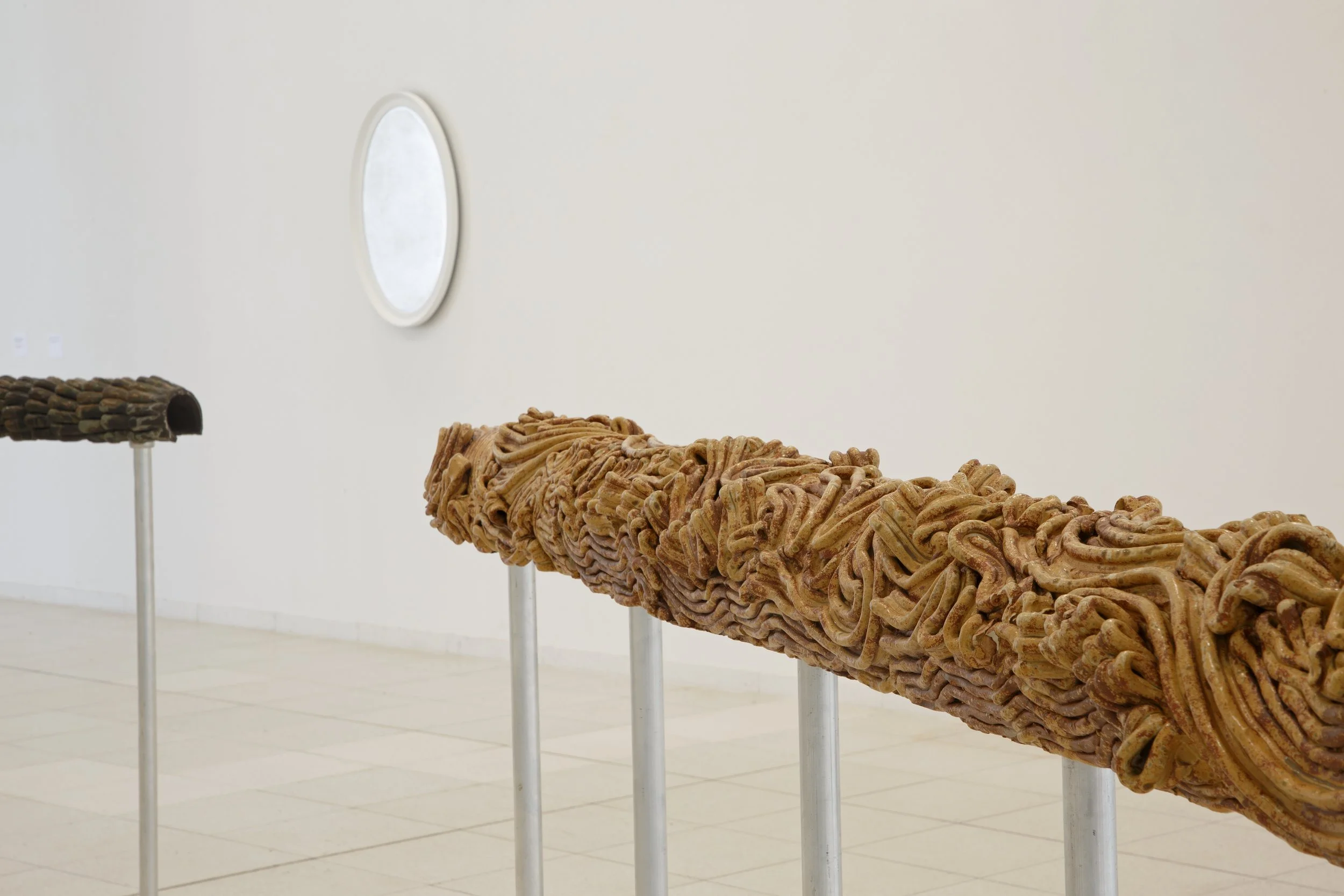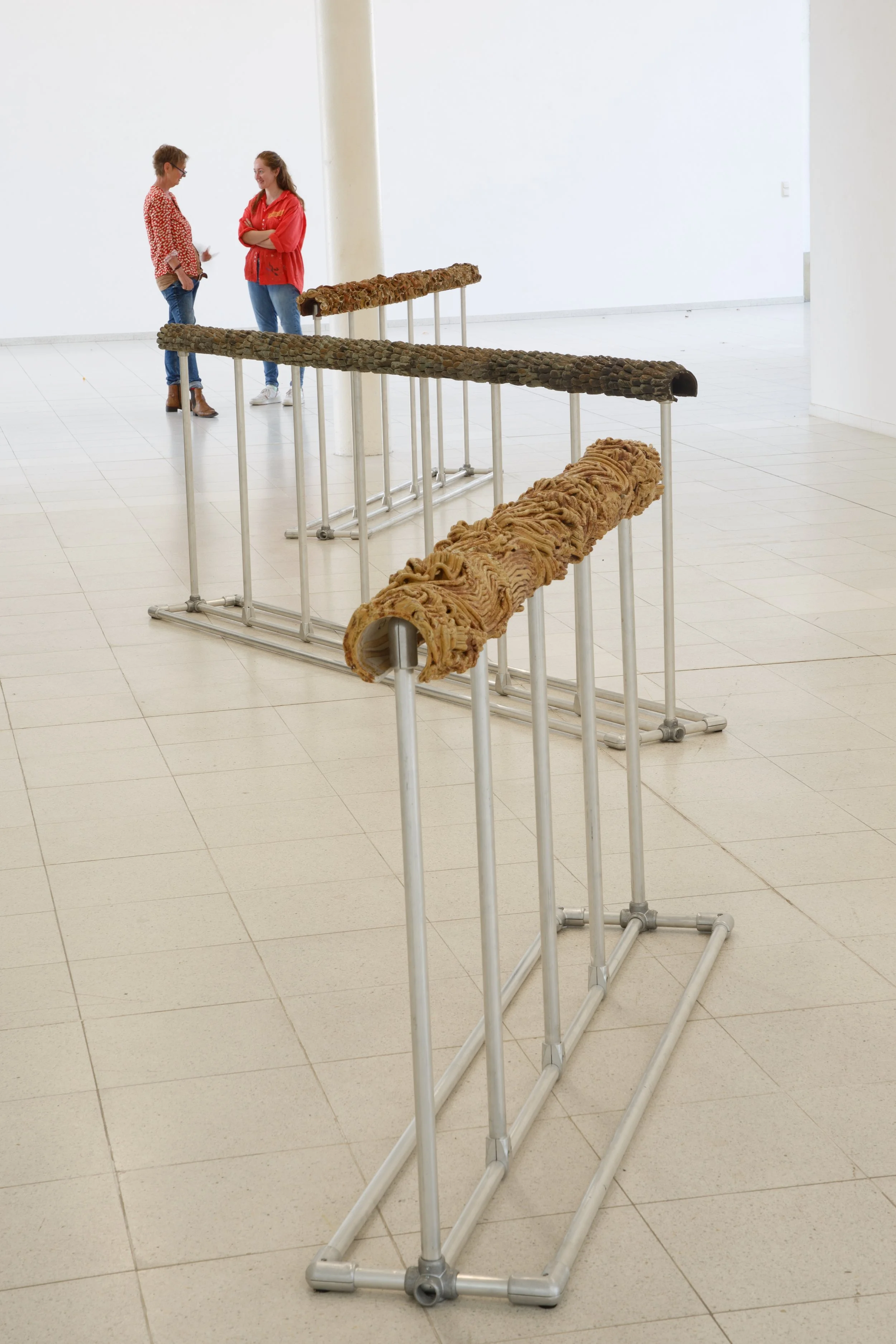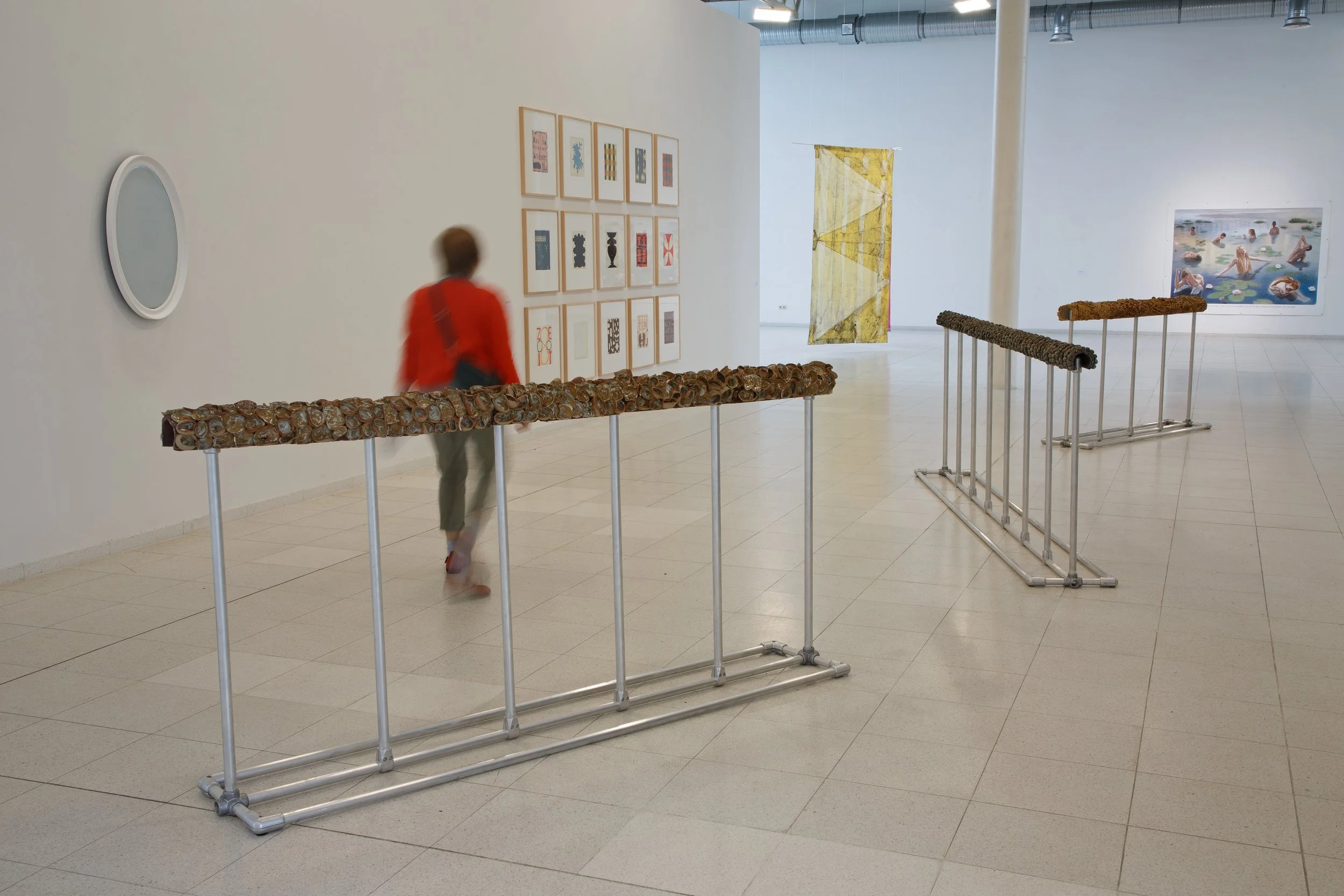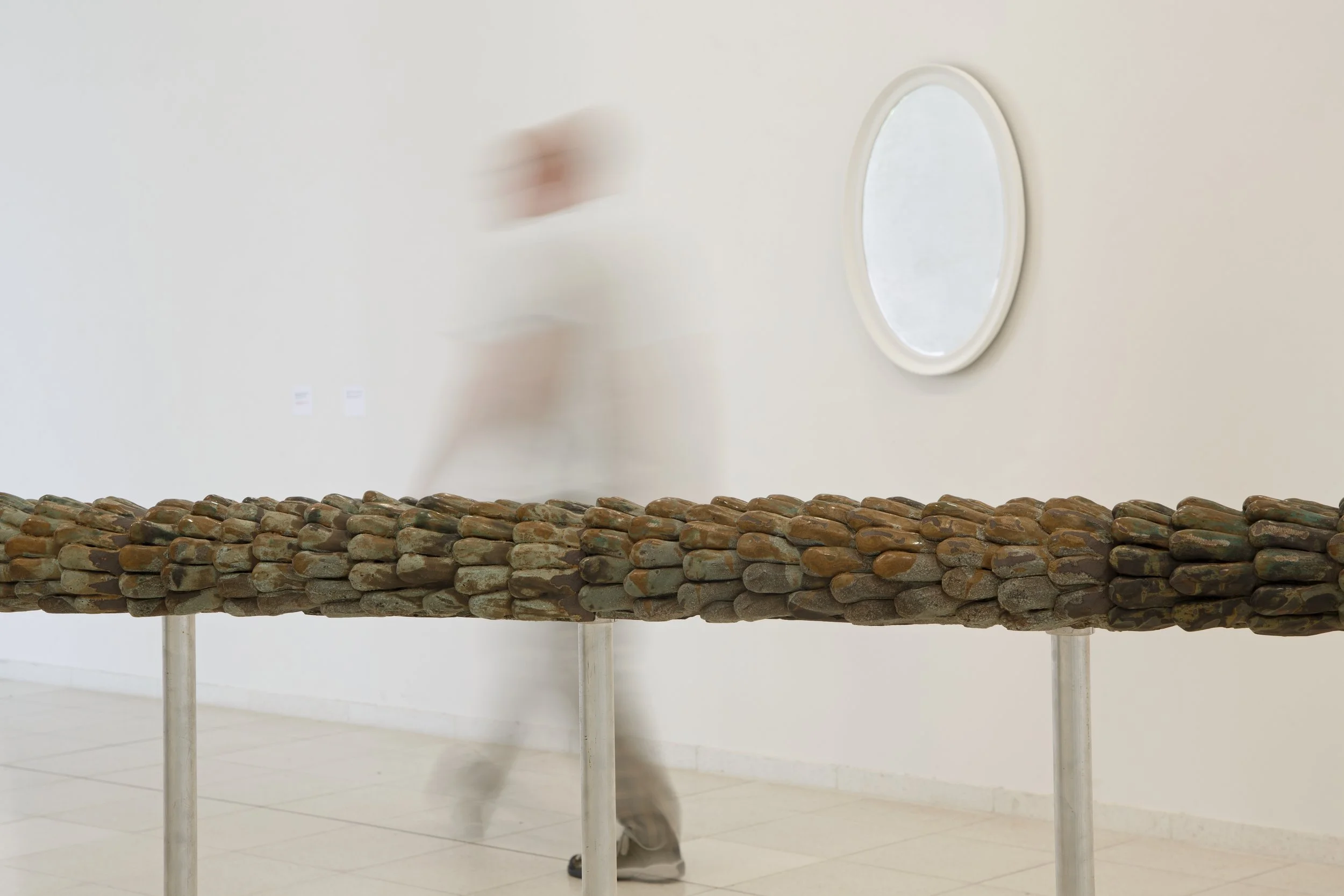A City-Dweller’s Guide through Nature
198-310x150x30 cm (varying sizes) / Ceramics, Aluminum Pipes / 2025
Photos by AndreasThull
Like hollowed-out tree trunks, Nils Blau’s ceramic works rest on specially made aluminium frames. This first impression immediately reveals the tension between nature and construction that defines the work: the naturalistic yet artistically alienated impression, almost architectural in its rigid scaffolding, creates a ‘positive friction’ that provokes a second, closer look – and even more: an exploration with the hands. Each of the three ‘railing’ sculptures has its own repetitive yet varying form: drops layered on top of each other in iridescent colours, bowl shapes that are compressed and distorted in their interplay, bundles of strands that twist around each other in waves and knots.
Blau develops the shapes and colours of the ceramic elements by engaging with natural materials that he collects. From these, he distils a repertoire of basic forms that appear naturalistic without imitating natural surface structures. Blau cites tree lichens as inspiration for the shell shapes, for example. Although this connection is recognizable, the form has emancipated itself from its model. He also produces his own glazes, incorporating found objects from nature as ingredients. The ash from collected wood serves as a flux, lowering the melting point of the glazes, allowing them to liquefy and determining the firing process.
Both clay and glaze influence the creative process through their specific materiality. ‘The material has its own language,’ is how Blau describes it. Moments of control and letting go alternate. The artist’s engagement with the material ultimately gives rise to the work. The interplay between aluminium and ceramics, as well as the sometimes repetitive, sometimes modelling working method, create moments of irritation that invite closer examination. Touching the ceramic handrail has a calming effect, intuitively slowing down the pace and guiding the hands over the surfaces. In this way, the work becomes a place of reflection. Blau originally conceived the works for ART Biesenthal, an annual international exhibition in the Biesenthal nature reserve, north-east of Berlin (Germany). The exhibition aimed to create awareness and appreciation for the nature in which the objects were to be presented. The long journey to Blau’s sculpture series alone took visitors deep into the nature reserve – the title A City-Dweller’s Guide through Nature refers to this dual path: the one leading to the work and the one within the work itself.
By being in an interior space, as here in the Kunsthalle Trier, the focus shifts to personal, sensory experience and inner reflection. The work does not give the hands a direction or the thoughts a fixed answer – rather, it offers a point of reference and opens possibilities. Viewers are encouraged to pause, make contact and establish a relationship – with themselves and with the world around them. They can explore the field of tension that Blau opens with his works: perceiving nature in its constructed form, experiencing connection even in contrast, and thus reflecting on their own role as part of the cosmos, of the whole world.
Text bei Hannah Weis
